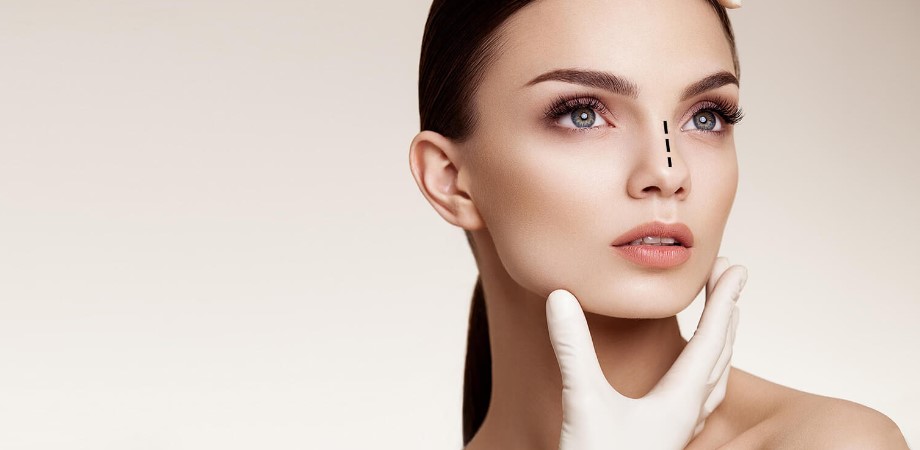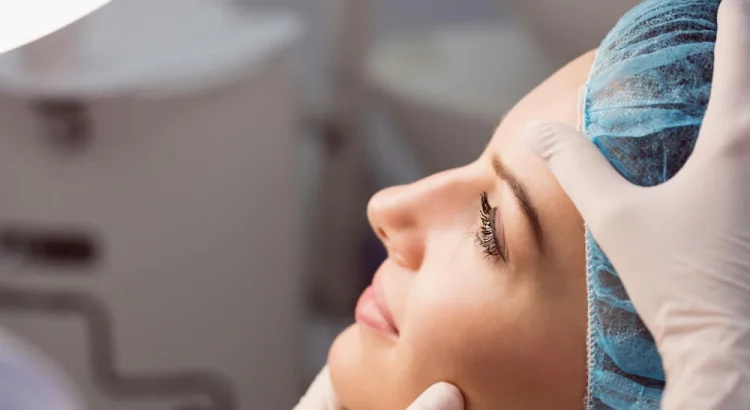Contents;
Non-Surgical Options For Nose Reshaping

Rhinoplasty surgery, commonly known as a nose job, is a popular cosmetic procedure that aims to reshape and enhance the appearance of the nose. However, surgical intervention is not the only option for individuals seeking to enhance their nasal aesthetics. In recent years, non-surgical options for nose reshaping have gained significant popularity, offering a less invasive and non-permanent alternative to traditional surgical rhinoplasty.
One of the most common non-surgical options for nose reshaping is the use of dermal fillers. Dermal fillers, such as hyaluronic acid-based fillers, can be strategically injected into specific areas of the nose to correct minor imperfections and achieve a more balanced and symmetrical appearance. This technique offers instant results and requires minimal downtime, making it an attractive option for individuals who are seeking a quick and temporary solution for their nasal concerns.
In addition to dermal fillers, another non-surgical option for nose reshaping is the use of thread lifts. Thread lifts involve the insertion of biodegradable threads into the nose to lift and contour the nasal tissues. This technique can be particularly effective in addressing issues such as a drooping nasal tip or a prominent nasal bridge. Thread lifts are a minimally invasive procedure that can provide noticeable results with minimal downtime.
- Non-surgical options for nose reshaping can be a suitable choice for individuals who are looking for temporary results without the commitment or potential risks associated with surgical rhinoplasty. It is important to consult with a qualified and experienced aesthetic professional to determine the most appropriate treatment plan based on individual needs and goals.
- Rhinoplasty surgery remains the gold standard for individuals seeking permanent and significant changes to their nasal appearance. While non-surgical options can provide temporary improvements, they are not suitable for everyone. Surgical rhinoplasty allows for more extensive reshaping of the nose, addressing structural issues and providing long-lasting results. The advancements in surgical techniques, such as the use of computer imaging and 3D printing, have significantly improved the precision and predictability of surgical outcomes.
| Key Benefits of Non-Surgical Options for Nose Reshaping |
|---|
| 1. Quick and non-permanent results |
| 2. Minimal downtime and recovery |
| 3. Less invasive and non-surgical approach |
| 4. Can be tailored to individual needs and goals |
Advancements In Computer Imaging For Better Results

In the field of rhinoplasty surgery, advancements in computer imaging technology have greatly improved the accuracy and precision of surgical outcomes. Computer imaging allows surgeons to create a detailed three-dimensional model of a patient’s face, enabling them to better visualize and plan the surgical procedure. By using computer imaging, surgeons can simulate the desired changes to the patient’s nose and communicate the expectations more effectively. This technology has revolutionized the field of rhinoplasty, offering patients the opportunity to see a realistic preview of their post-surgical results.
One of the main benefits of computer imaging in rhinoplasty is the ability to achieve more predictable and satisfactory results. With computer simulations, surgeons can assess the facial features and proportions and determine the most suitable changes to be made to the patient’s nose. This technology allows for a more precise analysis of the nasal structure, taking into consideration factors such as the shape, size, angle, and symmetry of the nose. By accurately planning the surgical procedure using computer imaging, surgeons can minimize the risk of unexpected outcomes and ensure better results.
In addition to preoperative planning, computer imaging also plays a crucial role in patient communication. By showing patients a visual representation of how their nose will look after the procedure, surgeons can manage their expectations effectively. It allows patients to have a realistic understanding of the potential outcomes, enhancing their decision-making process. Moreover, computer imaging enables surgeons to make adjustments and modifications based on the patient’s preferences before the actual surgery, ensuring a more personalized and satisfactory experience for the patient.
| Advancements In Computer Imaging For Better Results |
|---|
| Improved accuracy and precision in rhinoplasty surgery |
| Three-dimensional modeling for better visualization and planning |
| Predictable and satisfactory results |
| Enhanced patient communication and expectation management |
In conclusion, advancements in computer imaging have significantly contributed to the field of rhinoplasty surgery by providing better visualization, planning, and communication. This technology has revolutionized the way surgeons approach nose reshaping procedures, allowing for more accurate and predictable outcomes. With computer imaging, patients can have a realistic preview of their post-surgical results and actively participate in the decision-making process. As the technology continues to advance, the potential for even better results in rhinoplasty surgery increases, ensuring higher patient satisfaction.
The Use Of 3D Printing In Planning Surgeries

When it comes to planning surgeries, advancements in technology have led to various innovative techniques being used in the medical field. One such technique that has gained significant popularity is the use of 3D printing. In the realm of rhinoplasty surgery, 3D printing has revolutionized the way surgeons plan and execute procedures for better results.
Traditionally, surgeons would rely on 2D images and physical models to visualize how a patient’s nose would look after the surgery. However, this method had its limitations as it didn’t provide an accurate representation of the final outcome. With the introduction of 3D printing, surgeons can now create highly detailed and precise models of the patient’s nose, allowing them to analyze and plan the surgery in a more meticulous manner.
Using 3D printing in the planning phase of rhinoplasty surgery offers several advantages. Firstly, it enables surgeons to have a tangible model that closely resembles the patient’s nasal structure. This helps them to better understand the anatomical complexities of the nose and develop a personalized surgical approach. Additionally, 3D printing allows surgeons to simulate different surgical techniques and make more accurate predictions about the final outcome.
- Using a 3D-printed model, surgeons can explain the procedure in detail to the patient, enhancing patient-doctor communication and ensuring that both parties are on the same page regarding the expected results. This improves patient satisfaction and provides a more realistic understanding of the post-surgery appearance.
Innovative Techniques For Minimal Scarring
The goal of any rhinoplasty surgery is to reshape the nose and improve its appearance. However, one concern that many patients have is the potential for scarring after the procedure. Fortunately, with advancements in technology and surgical techniques, there are innovative methods available to minimize scarring and achieve the desired results.
Intraoperative Techniques: Surgeons now use advanced intraoperative techniques to minimize trauma to the tissues and reduce the risk of scarring. These techniques include the use of precise and delicate incisions, as well as specialized instruments that minimize tissue disruption. By minimizing tissue trauma, the likelihood of scarring is significantly reduced.
Endonasal Approach: Another innovative technique used in rhinoplasty is the endonasal approach. This approach involves making incisions inside the nostrils, eliminating the need for external incisions. By avoiding external incisions, the risk of visible scarring is greatly reduced. The endonasal approach is particularly beneficial for patients who require minor reshaping of the nose.
Laser Technology: Advanced laser technology is also being used in rhinoplasty surgeries to minimize scarring. By using lasers to make precise incisions and remove or reshape tissue, surgeons can achieve more accurate results with minimal scarring. Laser technology also promotes faster healing and reduces the risk of complications.
Overall, the use of innovative techniques in rhinoplasty surgery has greatly improved the outcome for patients seeking minimal scarring. Whether it’s through the use of advanced intraoperative techniques, the endonasal approach, or laser technology, surgeons are able to achieve more natural-looking results with less visible scarring. If you are considering rhinoplasty surgery, it is important to consult with a qualified and experienced surgeon who can discuss these innovative techniques and determine the best approach for your specific needs.
Augmentation Rhinoplasty: Achieving A More Balanced Profile
Augmentation Rhinoplasty is a surgical procedure that aims to improve the appearance and balance of the nose. It is often performed to enhance the overall facial harmony and achieve a more proportionate profile. This specific type of rhinoplasty is commonly chosen by individuals who desire to increase the projection or size of their nose, as well as those seeking to correct any structural abnormalities that may exist.
One of the main goals of augmentation rhinoplasty is to create a balanced profile. By carefully assessing the patient’s facial features and considering their desired outcome, the surgeon can determine the appropriate amount of augmentation needed. This can involve adding cartilage grafts, implants, or even utilizing the patient’s own tissue to achieve the desired results. The use of these techniques ensures that the final outcome blends harmoniously with the patient’s natural features and creates an aesthetically pleasing appearance.
In recent years, advancements in computer imaging have greatly contributed to the success of augmentation rhinoplasty procedures. With the help of computer-generated simulations, both the patient and the surgeon can visualize the potential outcome of the surgery. This enables the patient to have a clearer idea of what to expect and provides the surgeon with a valuable tool for planning and executing the procedure with precision.
- Benefits of Augmentation Rhinoplasty:
| 1. Enhanced facial balance and proportion | 2. Improved self-confidence and self-image | 3. Correction of structural abnormalities |
| 4. Increased nose projection or size | 5. Natural-looking results | 6. Long-lasting effects |
It is important to note that augmentation rhinoplasty is a highly specialized procedure and should only be performed by a qualified and experienced plastic surgeon. The surgeon’s expertise, coupled with the use of innovative techniques and computer imaging, ensures a successful outcome and a more balanced profile for the patient.
Ethnic Rhinoplasty: Tailoring Procedures To Specific Features

Ethnic rhinoplasty is a specialized type of rhinoplasty surgery that focuses on tailoring procedures to specific features of individuals from different ethnic backgrounds. This type of surgery takes into consideration the unique characteristics of various ethnic groups and aims to achieve a more harmonious and balanced appearance while still respecting and preserving the cultural identity of the patient.
One of the key goals of ethnic rhinoplasty is to enhance the natural beauty of the nose while maintaining the patient’s ethnic features. Each ethnic group has its own distinct nasal features, such as the shape, size, and projection of the nose, as well as the thickness of the skin and cartilage. Therefore, it is essential for the surgeon to have a deep understanding of these nuances and employ techniques that are specific to each ethnic group.
During the initial consultation, the surgeon and the patient discuss the desired changes and expectations for the outcome of the surgery. The surgeon also evaluates the patient’s nasal structure, skin type, and overall facial features to develop a customized surgical plan. This may involve reshaping the tip of the nose, refining the nasal bridge, narrowing the nostrils, or adjusting the angle between the nose and upper lip, among other procedures.
- Rhinoplasty surgery can be a life-changing procedure for individuals who are unhappy with the appearance of their nose. Whether it is for cosmetic reasons or to address breathing difficulties, patients often seek the expertise of a skilled surgeon to achieve their desired results.
- Advancements in computer imaging have revolutionized the field of rhinoplasty surgery. This technology allows surgeons to create a 3D model of the patient’s face and simulate the potential results of the procedure, giving patients a more realistic expectation of the potential outcome.
- Another innovative technique in rhinoplasty surgery is the use of 3D printing in planning surgeries. Surgeons can create a physical model of the patient’s nose based on the 3D computer-generated image, allowing them to accurately plan and execute the procedure with precision and improved outcomes.
| Benefits of Ethnic Rhinoplasty: | Considerations for Ethnic Rhinoplasty: |
|---|---|
|
|
Revision Rhinoplasty: Correcting Previous Unsuccessful Surgeries

Revision rhinoplasty is a specialized surgical procedure performed to correct and improve the outcomes of previous unsuccessful nose surgeries. It is a complex and highly skilled procedure that requires a deep understanding of nasal anatomy and aesthetics. This type of rhinoplasty is often sought by individuals who are unhappy with the results of their initial nose surgery or have experienced functional difficulties.
One of the main reasons why people opt for revision rhinoplasty is due to cosmetic dissatisfaction. Sometimes, the desired aesthetic outcomes may not have been achieved in the initial surgery, leading to asymmetry, irregular contours, or other cosmetic concerns. Revision rhinoplasty can address these issues and help patients achieve their desired appearance.
In addition to cosmetic concerns, revision rhinoplasty can also address functional issues caused by previous surgeries. Some patients may experience difficulty breathing, nasal obstruction, or other functional problems due to inadequate correction of underlying structural issues in the initial surgery. Revision rhinoplasty aims to improve nasal function and restore proper airflow.
| Benefits of Revision Rhinoplasty |
|---|
|
It is important to note that revision rhinoplasty is a complex procedure that should be performed by a skilled and experienced plastic surgeon. The surgeon must carefully evaluate the patient’s unique situation and develop a comprehensive surgical plan to address the specific concerns. Open communication between the patient and surgeon is essential to ensure realistic expectations and successful outcomes.
Overall, revision rhinoplasty offers a chance to correct and improve the results of previous unsuccessful surgeries. By addressing both cosmetic and functional concerns, this specialized procedure can help patients achieve a more harmonious and satisfactory outcome, restoring their confidence and enhancing their quality of life.
When Will I See The Final Result of Rhinoplasty
Recovery Tips for Closed Rhinoplasty Surgery
Choosing the Right Surgeon for Rhinoplasty
Rhinoplasty Surgery About
What Are the Risks of Rhinoplasty?
